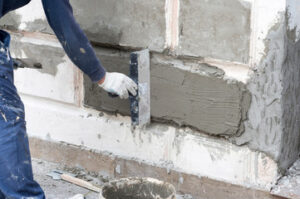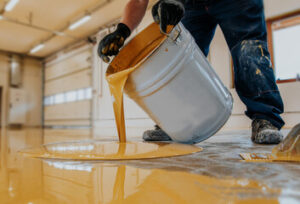Trim trees and shrubs to remove dead or unwanted branches and improve appearance, health, and value. May use climbing equipment or buckets on extended truck booms. Contact Tree Service Poway for professional help.

Power lines are energized and can shock workers who touch them directly or indirectly with a tool, limb, or other object. Power lines may also jump from a tree to another object.
Trees enhance landscapes, purify the air, and save energy by reducing wind resistance. They also contribute to the beauty of your property and increase its value. However, trees need regular maintenance to thrive. Proper species selection and installation help minimize future health issues, but ongoing care and inspections are the best way to catch problems before they become costly.
Professional arborists understand the unique needs of each tree species, and they use a variety of techniques to promote their well-being. Pruning, mulching, fertilization, and treatments are all used to support strong, healthy growth, improve the structure of the canopy, reduce pest infestations, and prevent structural weakness.
For example, pruning ensures that a tree’s mass is properly proportioned to its roots and crown. It also stimulates the formation of a well-proportioned central leader, helps maintain proper canopy alignment, and minimizes the risk of splitting. Additionally, selective pruning redirects a tree’s resources toward vital areas, which enables it to resist disease and insect damage.
A well-trained team of professionals will prune or treat a landscaped area according to a plan that’s customized for your property. The service will take into account a landscape’s unique characteristics, including the type of soil and drainage, its current state, and whether or not it is influenced by nearby structures. In addition, the service will also examine a landscape’s other plant species. Because these plants compete for water and nutrients, they will need special attention to keep them healthy.
An ounce of prevention is worth a pound of cure, and that’s especially true for tree service. Proactive maintenance reduces the risk of dangerous branches overhanging walkways or power lines. It also reduces the risk of damage from storms or other environmental stresses.
A qualified tree service will offer a variety of services to meet your landscape’s specific needs, and it should follow strict safety practices to protect its employees and clients. In addition, it should have comprehensive insurance coverage that covers accidents and other unexpected incidents during a job. You can also find out more about the company’s policies by asking for detailed estimates and a breakdown of all fees.
Safety
A tree’s health and appearance contribute to the overall aesthetic of a landscape. Professional tree service not only maintains the appearance of trees but also reduces property damage and personal injury risks associated with unhealthy or fallen trees. Professionals can provide a range of services such as pruning and trimming, thinning, and removals.
Performing any type of tree work without the proper training or equipment can be extremely dangerous. Professionals have extensive training in assessing the condition of trees, and they use specialized equipment for safe and efficient operation. This includes aerial lift trucks for high canopy work, stump grinders, state-of-the-art climbing gear, hard hats, and other safety equipment that are not found in your garage or the back of a general handyman’s truck.
Arborists are also well-versed in eco-friendly practices that preserve the ecological balance of your landscaping. They can recommend the best course of action to treat or remove a diseased or damaged tree, which will encourage other plants in the area to thrive.
Regular upkeep activities like pruning and thinning keep trees healthy, reducing the risk of limbs falling during storms or high winds. Tree service professionals can also help you identify warning signs that may indicate a potential problem, such as leaning trees, cracks in the trunk, or extensive branch loss.
If you notice any of these red flags, be sure to contact a tree service immediately. An experienced team can trim or remove a damaged tree before it becomes a safety hazard for you, your family, or your neighbors.
Aesthetics
Trees are a natural element of commercial landscapes, offering shade and beauty. They can also increase property value, making it important to keep them healthy and well-maintained. Tree Service is a multifaceted process that includes pruning and trimming, disease management, stump grinding, and even tree removal when necessary. With expert knowledge of all aspects of tree care, Tree Service professionals are well-equipped to ensure the health and safety of trees on commercial properties.
Pruning and shaping are vital to the health of a tree, promoting growth, encouraging vibrant color, and boosting curb appeal. Professional trimming eliminates dead branches and limbs that pose risks to people and structures, as well as removes unsightly growth. It also promotes healthy air circulation and sunlight exposure, which can boost the energy efficiency of your home. In addition, pruning during the dormant season reduces stress on the tree and allows it to recover before winter weather hits.
A healthy and well-maintained landscape is the first impression your company makes. When a building’s landscaping is in disrepair, it gives off an unprofessional and unkempt appearance that can turn off potential clients. With consistent Tree Service, you can keep your commercial properties looking their best and improve your business’s image.
While enhancing the visual appeal of a property, Tree Service also helps to maintain environmental sustainability. Well-trained arborists employ environmentally friendly practices that promote the longevity of trees and other plants. They specialize in a variety of techniques that preserve the natural environment and encourage growth, including mulching and proper fertilization.
The environment benefits from properly maintained trees as well, as they are instrumental in fostering healthy ecosystems. They absorb pollutants and release oxygen, reducing greenhouse gases and air quality issues. In addition, they provide shade that can lower outdoor temperatures and save energy, as well as serve as habitats for various wildlife species. Through routine inspections and the provision of adequate upkeep, Tree Services help to preserve these vital natural elements.
Value
Professional tree services are an investment in the long-term health and value of a property. Properly maintained trees can improve a home’s curb appeal and increase its perceived worth, while reduced risk from damaged or falling trees will help to lower insurance premiums.
The hallmarks of a quality professional tree service include experienced and trained arborists, specialized equipment, and comprehensive liability coverage. These features set professional tree service providers apart from do-it-yourself or uninsured non-professional work, which can lead to costly damages and injury to people or property.
A quality tree service company will have extensive experience with the full range of issues that can affect trees, from pruning to disease management. They will also be able to provide detailed estimates that describe what services are to be performed and the associated costs. This will allow property owners to compare different companies and make an informed decision based on their needs, budgets, and priorities.
In addition to providing a variety of aesthetic and safety benefits, professional tree services contribute to environmental sustainability. By utilizing eco-friendly practices and ensuring proper waste disposal, tree services protect the surrounding ecosystem by minimizing the impact of their work on the surrounding habitat.
When choosing a tree service provider, property owners should consider the company’s reputation in the community and its track record of customer satisfaction. Look for testimonials, reviews, and a strong local presence. Inquire about the company’s education, licensing, and certifications; these are good indicators of their professionalism and commitment to quality work.
Many homeowners attempt to save money by performing their own tree maintenance, but this can be dangerous and lead to a number of complications. For example, improper pruning techniques can cause damage to the tree or even its death. In addition, large tree removals require specialized equipment that is often beyond the capabilities of homeowners and may pose a hazard to nearby homes and people. Lastly, many overgrown trees pose a fire hazard and are unsafe to be left in place. For these reasons, it is important to hire a professional tree service for routine maintenance and emergency situations.

